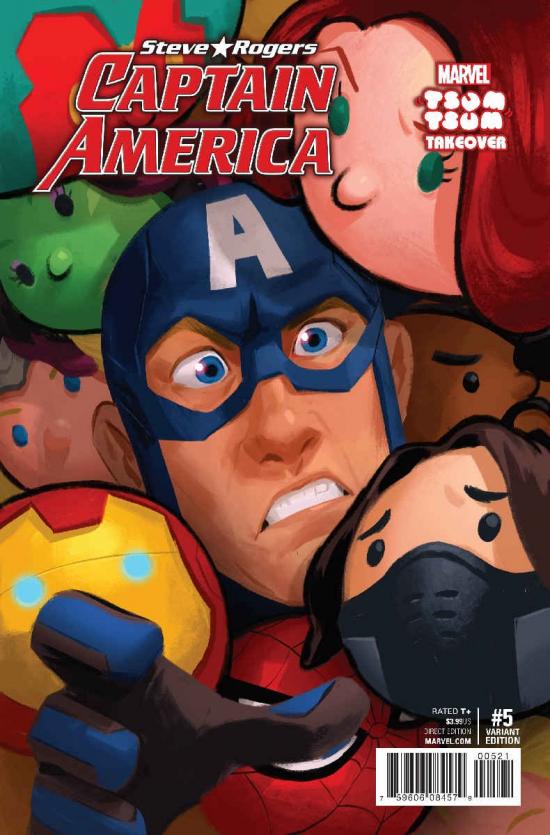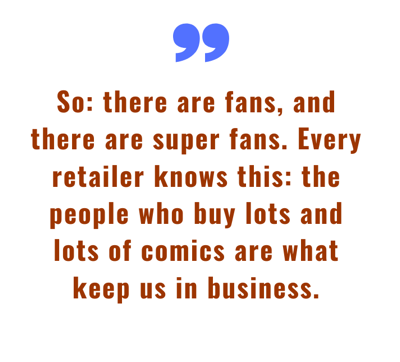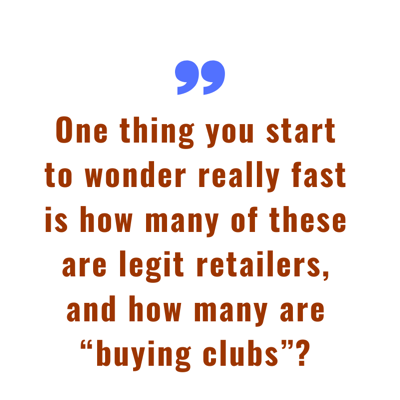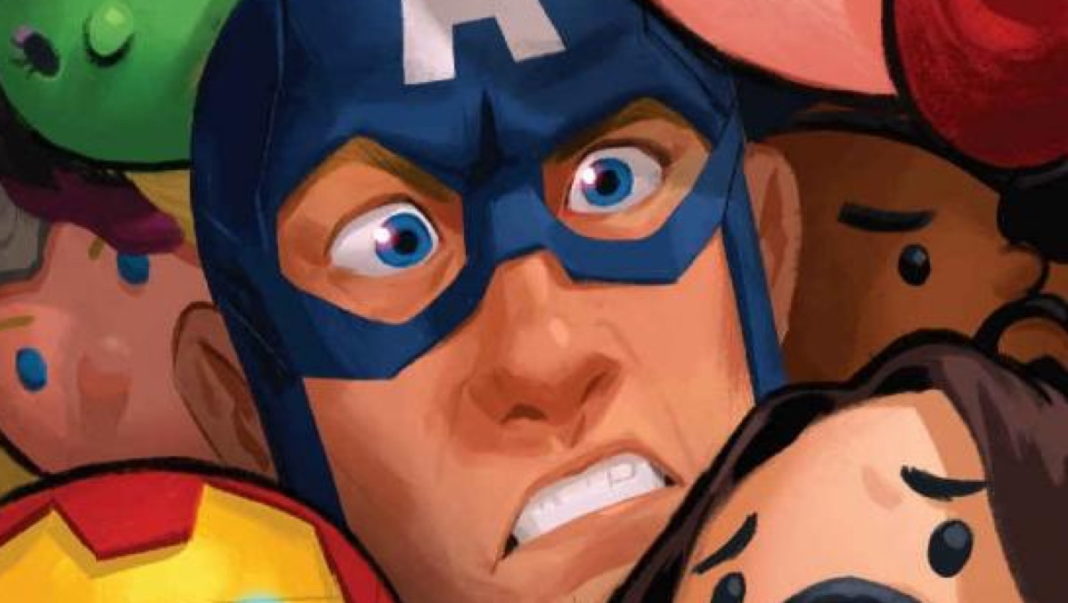By Brian Hibbs
Whoops.
A couple of weeks ago, one of Diamond’s Customer Service reps made a mistake and sent out, to a subset of accounts, an attached file with the account number of what appears to be every Diamond customer who is buying Marvel comics, along with a month-by-month breakdown of what they spent on Marvel comics between April and October of 2019. This is overall spending, not individual line items.

Also included there was the contact information for the accounts, which in several cases includes personal contact information (cell phone numbers and stuff) – this includes the major breach of account numbers, though it doesn’t have any log-in details or passwords, but Diamond has had to institute an additional security check now if one doesn’t call your own rep, to prevent malicious actions. The sales data doesn’t appear to include anything not sold by Marvel (though it isn’t like I can check anything more than my own information), so it’s not the end of the world, but there is a reasonable extrapolation that one can make in many cases, so in very competitive markets, this doc could potentially be a real problem.
Some retailers have talked openly about taking legal action against Diamond for the leak.
The leak raises a number of questions for me, first of which is “why can any (?) rep access the entire database of all accounts in an easy-output feature like this?”
This file does, however, provide a bit of a Rosetta Stone for some basic statistical information on the market that we’ve been missing, such as the number of accounts and general size of discount categories. While certainly Diamond must have accounts that don’t buy comics from them, as well as accounts that don’t buy Marvel comics, we can certainly now say that there are 2,440 accounts buying Marvel comics during this seven month period, and if the listing of “store count” column is accurate (there’s reasons to think that it might only have a tangential relationship to reality – including “reorder accounts” or counting non-retail warehouse spaces as a store), then there are 3,112 “stores” in the world.
Of this, the United States has 2,061 accounts (2,508 stores), while the rest of the world has 379 accounts (604 stores – there’s a lot of sub-distribution outside US proper).
One thing these numbers do not appear to include is anything related to Diamond UK, so there are an unknown number of additional accounts and stores than are listed here, accounting for a probably significant number of sales.
There are almost than $128 million in sales reported here, and I can’t imagine that it would surprise anyone, anywhere, that the two largest accounts (DCBS and Midtown – this is no secret) are massive, but it is little surprising to see that just those two accounts alone represent almost 10 percent of dollars of retail sales of Marvel. More broadly, my general rule of thumb in my own retail experience is “the 80/20 rule” – 80 percent of your sales come from 20 percent of your customers – and that isn’t too far from true here: the top 20 percent of accounts represents almost 70 percent of sales.
The other major thing you can see at the top of the charts is how some accounts are “spikey”. Most stores throughout the file are fairly consistent from month-to-month: the monthly variance might be in the 10-20 percent range (ex: $25k in June, $29k in October) – but you can also find a number of accounts which are like $200k one month, $50k the next, $125k the next, $70k the one after. While certainly some of this could come out of buying into Marvel liquidation sales, you can also quickly correlate some of these spikes to store-exclusive variants – this is where a store pays (a much higher net price) to have an exclusive-to-them cover. Marvel typically offers these with a 3,000 copy minimum order on the first cover, and 1,500 after. It is completely unclear how many of these happen on a monthly basis, but one documented reporting showed 53 such covers for 2014’s Star Wars #1 (though that’s a pretty extreme example!), more recently, here are nine exclusive covers for this year’s X-Men #1.
(Of note is that this file is only store accounts – it doesn’t include direct-to-creator sales for popular artists who sell those covers direct like Alex Ross, Artgerm, J. Scott Campbell, etc etc)

When you add store exclusive covers to the distorting impacts of ratio covers – where Marvel has been pushing to even start doing 1:500 (and quick math check, when they offered that on the $10 cover price Marvel Comics #1000, that’s $5000 at retail. Only about 900 accounts order $5k in Marvel in an average month. If you assume that no one is making that large a bet for more than, say, 10 percent of their budget for the month, the number of folks who could qualify for that likely drops to under 35 accounts) – you can start seeing how Marvel is trying to make the name of the game not the content of the work. After all, your custom variant counts towards getting those ratio covers. Buy 3,000 copies of a cover (and another 1,500 as a “Virgin variant”), then you qualify for 180 1:25 covers, and 90 1:50, and 45 1:100, and nine 1:500, and it becomes clear that the greater goal is no longer building readership. Building readership is hard.
Certainly, it is harder than milking out more sales from your existing base. The return is faster, the return is easier, and it’s one of the reasons that it isn’t very unusual any longer for Marvel sales to drop by half or more between issue #1 and issue #2.
What starts to become clear in looking at the file is that the top of market is dominated by mail order, and that even when we’re looking at physical retail stores, “collectability” is driving Marvel’s periodical business more than I really every imagined. I mean, I always got that DCBS was big, but seriously, they’re crazy super big because of a thing that I probably should take a sidebar for.
So: there are fans, and there are super fans. Every retailer knows this: the people who buy lots and lots of comics are what keep us in business. I mean, the lovely people who buy one or three or five comics in the average week are great and we love and cherish them, don’t get me wrong (REALLY!), but we get to stay in business because of the people who are buying 20 or more comics in a single week, every single week.
And DCBS is cheaper for the superfan. Not just maybe, but 100 percent uncontroversially so. If I tried to match their pricing, with my cost of wages and rent and living expenses, and everything else, well, I’m no competition, nor is anyone in an urban environment. I could name ten of my best customers who could 100 percent save money by switching to mail order, but they don’t because they like the social world, and the social value of supporting a local comics shop. But, clearly, there are more of “my” customers choosing something other than my store (whether it be DCBS, or Marvel Unlimited, et al) than I’d maybe considered.
I feel like I’ve told you before that no one (usually) goes out of business in comic book retail because of a single giant mistake, but it’s almost always because of “a death of a thousand paper cuts,” right? Because retail can Suddenly Go Sour if something like 1-3 percent of customers rapidly change their orientation.
Anyway, end the sidebar.

The next four discount brackets are all pretty close to each other in terms of numbers of accounts, but the shocker for me was that nearly 25 percent of the listed accounts are marked as only qualifying for a 45 percent or lower discount, which requires average orders of less than $1,200 retail. With a typical Marvel cover price of $4, that’s only about 300 individual comic books. Considering that Marvel often publishes over 100 comics in a month (it was 110 in October), it’s hard to see how a rolling average of under $1,200 is a viable retail market except in a few edge cases.
One thing you start to wonder really fast is how many of these are legit retailer, and how many are “Buying Clubs”? It would take significantly more labor than I have the time and energy and patience for to go through the list account by account by account, but because I know my local market pretty dang well, the very first thing I looked at was, “how does San Francisco look?” We’ve got eight stores left in San Francisco (we once had 24!), and I own two of them, which means just seven accounts, right? But, oh, there are actually 11 accounts on the list, hm.
Before I go further, it might be instructive to share with you Diamond’s Terms of Sale. Now, these were written all the way back in 2006, and have not been updated particularly in the last 13 years, despite major changes in the manner in which books and comics are sold, and the relative positions of various competitors. Obviously, the TOS is long, but let’s focus in on this one paragraph:
“DCD does not sell directly to hobbyists or consumer-buying cooperatives. Orders will not be accepted unless the customer is engaged in a legitimate business activity dealing with product lines carried by DCD and is purchasing products from DCD strictly for retail resale to the ultimate end user from locations it has registered with and have been approved by DCD. Subdistributing of any type is strictly prohibited without DCD’s written consent. Customers selling via the Internet must possess a legitimate, operational, Registered Domain Name Website with Shopping Cart feature. Proof of eligibility may be required for each order form submitted.”
Marvel’s TOS, by the way, says this:
“2. Eligibility for Purchases of Marvel Products Through DCD.
A. Only comic book specialty stores engaged in a legitimate business of re-selling Products in a permanent retail venue with a current mailing address may purchase Products through DCD. Marvel will not sell Products directly to hobbyists through DCD, and may require that any prospective or existing customer submit proof of eligibility for purchase at the time that any order is placed.”
So, of those four of 11 “other accounts”, one is, in fact, a legit mail order company that I know well. Nice front end website, does regular business. We have another (who, quite surprisingly, is listed as having the single highest sales of all SF accounts) for whom I cannot identify any legit website. Well, they have a site, but it was clearly set up to “pass the test,” with a grand total of 16 Marvel Masterworks, that’s it, and isn’t doesn’t appear to have ever been updated – instead they sell high-end hardcovers on eBay and Etsy (!) – therefore breaking the Terms of Sale on the latter, as well.
The last two both have addresses that are not retail – one goes to a home, and the other goes to a post office. Neither have any website that I can find. The former is a 35 percent off account, which would strongly point to a “Buying Club”.
Now, look, I don’t know that I necessarily believe that the three out of 11 (27 percent) apparently “improper“ accounts just in my metro area represents the percentage in the world at large (I don’t), nor even, necessarily, that my view of what “improper” looks like is even exactly the right one (I’m a bit of a bitch, right?), but I gotta say that it chaps my ass a little bit that I even have to raise these issues here at the end of 2019.
But I do, very much, think that Diamond and Marvel are both happy to jump into bed too quickly with businesses that aren’t based around what I see as their long-term interests, or (even less so) the totality of the market. As all of the smart people are saying: “comics” as an industry, and, yes, as a medium, are changing right now at a pretty rapid clip, and if you want to stay relevant, you’ve got to evolve as well. Where I go personally insane is that there is SO much potential for Marvel and the Direct Market to grow (like: explosively) the number of people who read and enjoy comics.
Marvel is one of the best-known brands in the world. Direct Market retailers are among the most passionate ambassadors of that brand. I literally can’t think of any other real and established network of stores that could be entirely set-on-fire activated like the general raw potential that the DM has coupled with the ideological native leaning that most of my peers have. Let’s be real: most of my contemporaries did not open a store to make money, per se – they did it to have a clubhouse where they themselves could belong (and, sure, make money if we could!!). Even more so, I think the majority of my peers did so because they fucking loved Marvel comics. That wasn’t me: I was always the rarer DC kid, but I feel really safe in saying that the majority of my peers are why they are because they really really really love Marvel comics.
You know, my peer, my friend, Robert Scott, owner of Comikaze in San Diego, creator of the Comic Book Industry Alliance, just died very suddenly, and his main value was always that “the industry” would be such a more productive place if the leaders would put some genuine brainpower into valuing its most engaged retailers. That helping us create a new reader was always more valuable than taking an extra dollar from an existing one. I argued bitterly with the man, but at the end of the day he embodied the values we should hold: let’s try to grow this market a reader at a time because that’s where true success lies.
2020 is going to be, I think, a defining year for the “Direct Market” (I mean, I for one, buy a decreasing percentage of my best-sellers from the traditional market leaders), and I think we’d be better off if we tried to enact more of what Robert Scott ascribed to.
Brian Hibbs has owned and operated Comix Experience in San Francisco since 1989, was a founding member of the Board of Directors of ComicsPRO, has sat on the Board of the Comic Book Legal Defense Fund, and has been an Eisner Award judge. Feel free to e-mail him with any comments. You can purchase two collections of the first Tilting at Windmills (originally serialized in Comics Retailer magazine) published by IDW Publishing, as well as find an archive of pre-CBR installments right here. Brian is also available to consult for your publishing or retailing program.








An interesting column as always Brian.
Can you exapand on this part
“Of note is that this file is only store accounts – it doesn’t include direct-to-creator sales for popular artists who sell those covers direct like Alex Ross, Artgerm, J. Scott Campbell, etc etc”
What is the relationship here. So is this artists, like say Artgerm, he contracts with DC to do a cover and get it in their solicits – for a cut I assume – or is this them not working through Marvel or DC publisher in general to offer a variant.
I assume that Diamond is still handling fulfillment but that non-store “accounts” are just marked differently. There’s a “Channel” column in the file, but every entry says “Direct Market”, so, again, assuming, there’s a different “channel” for artists.
But that would take a second leak to be certain….!
-B
In the late 70’s I was involved with setting up one of the first new-issue mail order comic book companies.
Within four months ( when I left the day to day operations ) — it has broken even, paid for all the advertising,
equipment, packaging etc — and it’s volume had already dwarfed the store’s sales for new comics.
The interesting thing about the mail order was that even though more than ninety percent of the accounts were from the U.S. and Canada — well over sixty percent of the unit sales were to overseas destinations, with the biggest account by both dollars and units was from Ceylon of all places.
About ten years later, when a relative of mine got into comic book retailing ( which he now will be getting out of monthly issue floppies, except for the pull and hold accounts and a few mail order accounts ), and at my urging set up a new issue mail order service, the percentage of units shipped overseas was still over fifty percent.
With this in mind, I wonder how many copies of monthly floppies are actually being sold in Canada and the States ? To me, Comichron’s numbers appear overstated by somewhere between five to possibly fifteen percent, because everyone thinks that the numbers are specific to Canada/USA, but Mr. Miller cannot possibly account for mail order sales made by US retailers sent to overseas customers.
In other words — the monthly direct market is even worse off than everybody seems to think !!
Another great column — but shouldn’t this one have been numbered 277 ?
Diamond’s monthly report covers everything that left for retail destinations in North America. It is irrelevant to the report whether a retailer intends to sell to a customer in store, via mail-order in the United States, or outside; they are copies paid for by North American retailers.
Diamond itself ships to retail customers in other parts of the world; we believe its UK outlet would add around 10% to the monthly reports (though there are strong reasons for keeping the report regional, as it’s intended). Almost certainly since the 1970s retailers in other countries have supplanted some portion of mail-order exports; 15% is way too high, and 5% may be unlikely, given that many stores simply don’t do mail-order at all.
Wow, for your sake I hope that Diamond and their publisher partners would crack down on the buying club groups. Sure, I’d like to get all my comics at 50 percent off or run a reseller operation on Ebay from my basement. But that’s not the marketplace, and Diamond should offer a direct to customer shipping option if they allow it for those hacks. But the publishers sure don’t care. It’s product sold and profit made. You schmucks left running retail stores are the ones hurt by it. A black market sanctioned by the very distributor and publishing operations.
On another point – the super fans. The problem in today’s market is every publisher wants every fan to be a super fan. And they don’t make that a cheaper option! Line wide crossovers, mega events, prestige miniseries, one-shots in addition to the classic annuals, new publishers launching interconnected universes. Even these YA publishers are pumping out more offerings to the readers they already have engaged with. It’s awfully expensive to be current with any one publisher these days, especially if your local shop offers no discount. Simply put, a single issue is hardly worth $3.99, and certainly a month’s worth of Marvel comics is not worth $320 (that’s $4 times 80 issues)! In my own purchasing habits, I got in with the New 52 and quickly moved to Midtown and then DCBS just so i wouldn’t have to spend more than $100 on my limited budget. I now buy closer to twice that in a month, but I have moved most of my pull list to an LCS for only 20% discount and use DCBS for special orders and collected editions. Sorry, but a comic trade paperback is not worth $40. An omnibus isn’t worth $150 either. As a result of moving back to an LCS for community engagement and ever increasing costs of single issues, I have had to cut all Marvel purchases and severely cut back on DC and indy purchases. Mostly, I am trending toward cheap but satisfying back issues at my LCS and collected editions from online retailers. Best thing ever done by a publisher, and I said it here at the time, was DC cutting back to $2.99 with the Rebirth relaunch. Rather than making every #1 be overpriced to gouge speculators, they cut to attract more readers and a broader buy-in. It took me like 18 months to really drop any Rebirth launch title, and really that was because I didn’t like Constantine. I only cut Batgirl, Supergirl, and other post-Rebirth titles in the last 18 months as double shipped books went to $3.99 and story value wasn’t keeping up with the price increase. I’d love to read all the Hickman X-Men stuff, but I don’t have $50+ a month to devote to it all.
Comments are closed.